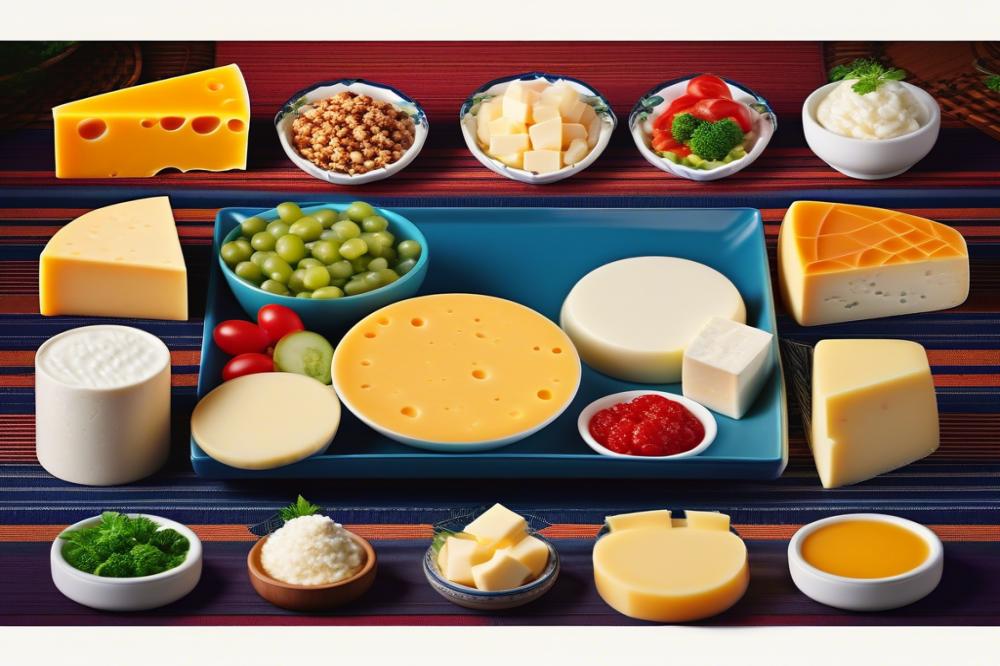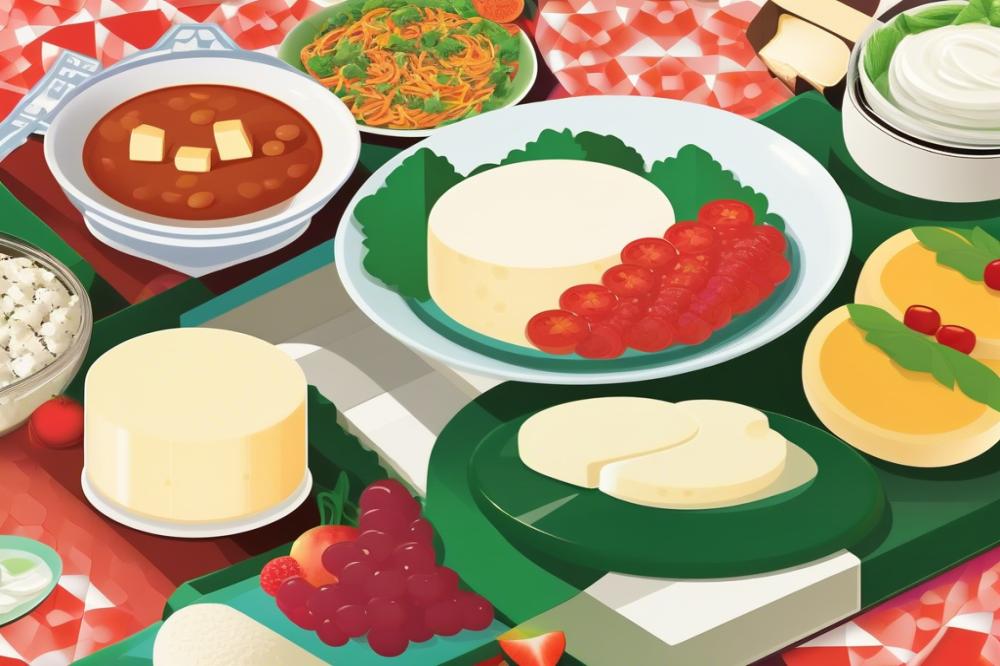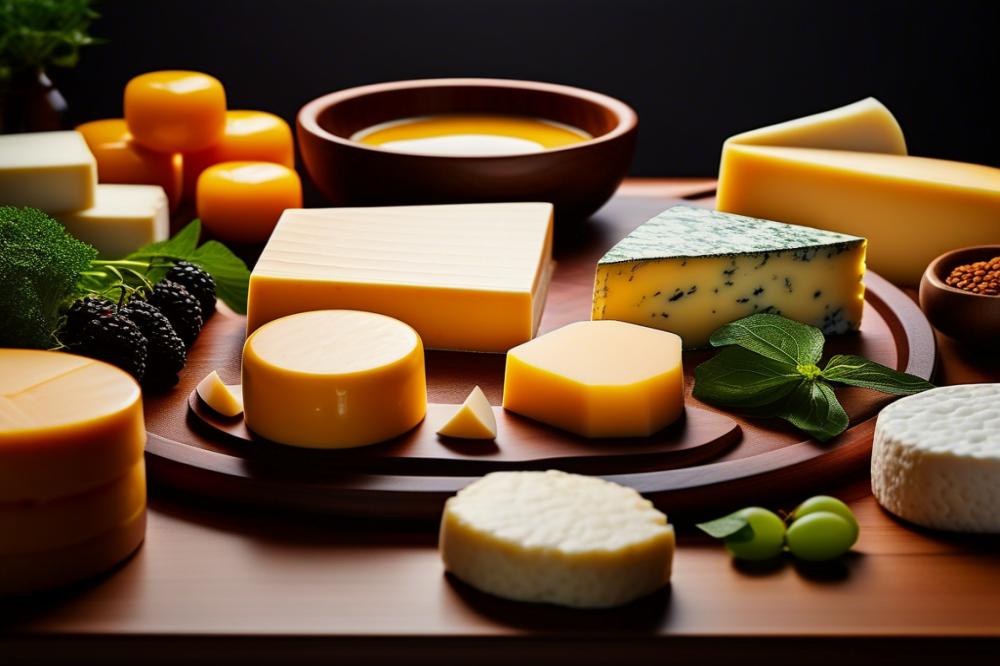South Korea’s Growing Love for Cheese and dairy products
Over the past few years, South Korea has seen a notable surge in the popularity of cheese and other dairy products. Once viewed as foreign and unusual, these items are now becoming essential parts of many diets. People are incorporating cheese into traditional meals. The transformation of Korean cuisine has welcomed this change with open arms.
Cheese has transitioned from being an exotic addition to a common staple. It can be found in everything from pizzas to street food. The rise of Korean cheese culture reflects a broader shift in dining habits. Young people, in particular, are driving this change. They are eager to experiment with new flavors and textures.
Cultural influences play a significant role in this evolving food landscape. Global trends, such as the popularity of Western cuisine, have encouraged many Koreans to try more dairy products. Increased exposure through travel and media also contributes to this shift. Social media platforms are teeming with mouthwatering images of cheese-laden dishes. They inspire viewers to create and share their own culinary adventures.
Moreover, the rise of local dairy farms and production facilities has made cheese more accessible. There is a growing interest in artisanal cheese-making. Consumers are seeking out unique varieties that reflect the region’s tastes. As this love for dairy consumption continues to grow, it blends seamlessly into the fabric of everyday life in South Korea.
Korean cheese culture

Cheese has a long and rich history around the world, but in Korea, it is a relatively new player. Traditionally, Korean cuisine focused more on fermented products like kimchi. Dairy, including cheese, was not a part of the norm. It wasn’t until the late 20th century that cheese began to find its way into local dishes. Western culture greatly influenced this shift. Many Koreans started to explore the creamy goodness of cheese, which was often considered exotic.
Emergence of Cheese in Traditional Korean Cuisine
In the beginning, cheese was mainly used in Western-style dishes. Pizzas, pastas, and burgers introduced Korea to new flavors. Over time, local chefs began mixing cheese with traditional foods. Popular dishes like tteokbokki (spicy rice cakes) and kimchi fried rice now often include a sprinkle of melted cheese. This blend of flavors has created a new wave of Korean cuisine that many enjoy.
Popular Cheese Varieties in South Korea
South Korea now boasts a variety of cheese options. Mozzarella is at the top of the list, often used in Korean-style pizzas and hot dishes. Cheddar has also gained popularity, appearing in many snack foods. Local brands have started to produce unique flavored cheeses, appealing to younger audiences. Some shops even offer cheese fountains at parties and gatherings. It’s a fun way to enjoy cheese in a social setting.
Globalization and Cheese Preferences
The influence of global culture has greatly changed Korean tastes. International travel and social media expose people to diverse cuisines. Korean consumers now seek more than just traditional dairy. Cheddar, gouda, and even blue cheese are finding their way into households. Many are eager to experiment with new recipes that include these varieties. Events like cheese festivals celebrate this interest, showcasing both local and imported cheeses.
dairy consumption

Trends in dairy consumption in South Korea
Dairy consumption in South Korea has increased noticeably over the past few years. More people are enjoying cheese in various forms. The rise in popularity can be seen in both homes and restaurants. Diverse cheese options are now found in everyday meals and snacks. Many restaurants feature cheese-heavy dishes on their menus. This change marks a shift from traditional Korean meals that focused less on dairy. Consumers are eager to try new flavors and types of cheese.
Demographics of cheese fans in Korea
Cheese lovers include a wide range of people. Younger generations, including teenagers and young adults, lead this surge. They are drawn to the flavor and versatility of cheese in cooking. Social media also plays a role in this trend. Sharing cheesy dishes has become popular among influencers. Families are not left behind, as parents introduce dairy to their children at an early age. It appears that cheese appeals to everyone from students to busy professionals.
Impact of health consciousness on dairy product popularity
Health awareness has made a significant impact on the rise in dairy consumption. Many people now recognize the nutritional benefits of cheese and yogurt. These foods provide essential nutrients like calcium and protein. As a result, items low in fat or organic varieties are gaining traction. Consumers are more careful about what they eat and look for healthier options. This trend suggests a greater understanding of diet and nutrition among the public. Health-focused promotions by dairy brands are also helping to increase interest. Overall, health consciousness is changing how people view and consume dairy products in South Korea.
Recipe: Korean Cheese Corn Pudding
This delicious dish combines sweet corn and gooey cheese, making it a delightful treat for cheese lovers everywhere. It’s a simple recipe that highlights how cheese has woven its way into Korean cuisine.
Ingredients:
- 1 cup sweet corn (fresh or canned)
- 1 cup mozzarella cheese, shredded
- 1/2 cup milk
- 2 eggs
- 1/4 cup sugar
- 1/2 teaspoon salt
- 1/4 teaspoon black pepper
- 1 tablespoon butter (for greasing)
Recipe Instructions:
- Begin by preheating the oven to 180°C (350°F).
- Grease a baking dish using butter to prevent sticking.
- In a separate bowl, whisk together eggs, milk, sugar, salt, and black pepper until well combined.
- Mix in the sweet corn along with half of the shredded mozzarella cheese. Stir it evenly.
- Pour everything into the prepared baking dish.
- Add the remaining mozzarella cheese on top for that delicious cheesy layer.
- Bake for 25-30 minutes. Watch for the cheese to turn golden and the pudding to set properly.
- After baking, let it cool slightly before serving for the perfect texture.
This dish exemplifies Korea’s evolving taste for dairy. Enjoying it warm adds to its comfort factor. Experimenting with different types of cheese could give this pudding a fresh twist as well. Mini variations, like adding herbs or spices, may enhance flavors. Every bite showcases a unique blend of sweetness and savory notes. Cheese lovers can now savor this fusion of cultures on their dining table.
Nutritional Information and Health Benefits
Caloric Content and Macronutrients of Korean Cheese Corn Pudding
Korean cheese corn pudding is a popular dish that balances flavors and textures. Each serving typically contains around 200 to 300 calories, depending on the recipe. Carbohydrates form a major part of the caloric content, largely from corn. A serving usually has about 30 to 40 grams of carbs. The fat content often hovers around 10 to 15 grams, usually derived from cheese and butter. Protein levels generally range from 5 to 15 grams, providing a satisfying, hearty bite.
Analysis of Cheese and Its Benefits
Cheese offers many nutritional perks. For starters, it is an excellent source of calcium. This mineral is crucial for strong bones and teeth. One ounce of cheese can provide up to 20% of the daily calcium requirement. Protein is another notable benefit, contributing to muscle growth and repair. A common metric shows that cheese can contain about 6 to 8 grams of protein per ounce. Additionally, cheese has beneficial fats that can support heart health in moderation.
Role of Dairy in a Balanced Diet
Dairy products, including cheese, play an important role in a balanced diet. They are rich in essential nutrients such as vitamin D and potassium. These nutrients help maintain overall health and wellness. Regular consumption of dairy can promote better digestion, thanks to probiotics found in products like yogurt. Many health experts recommend including dairy as part of daily meals, especially for growing teenagers. Incorporating dairy enhances nutrient intake, which can lead to long-term health benefits. Therefore, embracing cheese and other dairy foods can support a nutritious and well-rounded diet.
Wrapping Up the Cheese Journey
The rise of cheese consumption in South Korea has been notable over recent years. Many people are now more eager to explore different varieties of cheese. This shift has been driven by a growing curiosity about Western cuisine. Restaurants and cafes have adapted menus to include cheese dishes that attract both locals and tourists.
Korean cheese culture has begun to influence various culinary trends. With cheese becoming a staple in many traditional dishes, flavors are blending in interesting ways. Items like tteokbokki and pizza show how cheese enhances the overall taste. More kitchens are experimenting with innovative recipes, leading to a vibrant food scene.
The future of dairy products in Korean cuisine looks promising. As interest grows, expect to see even more cheese options available to consumers. Local dairies may increase production to meet this demand. Additionally, younger generations are keen to explore culinary traditions, making it likely that cheese trends will continue to flourish.



